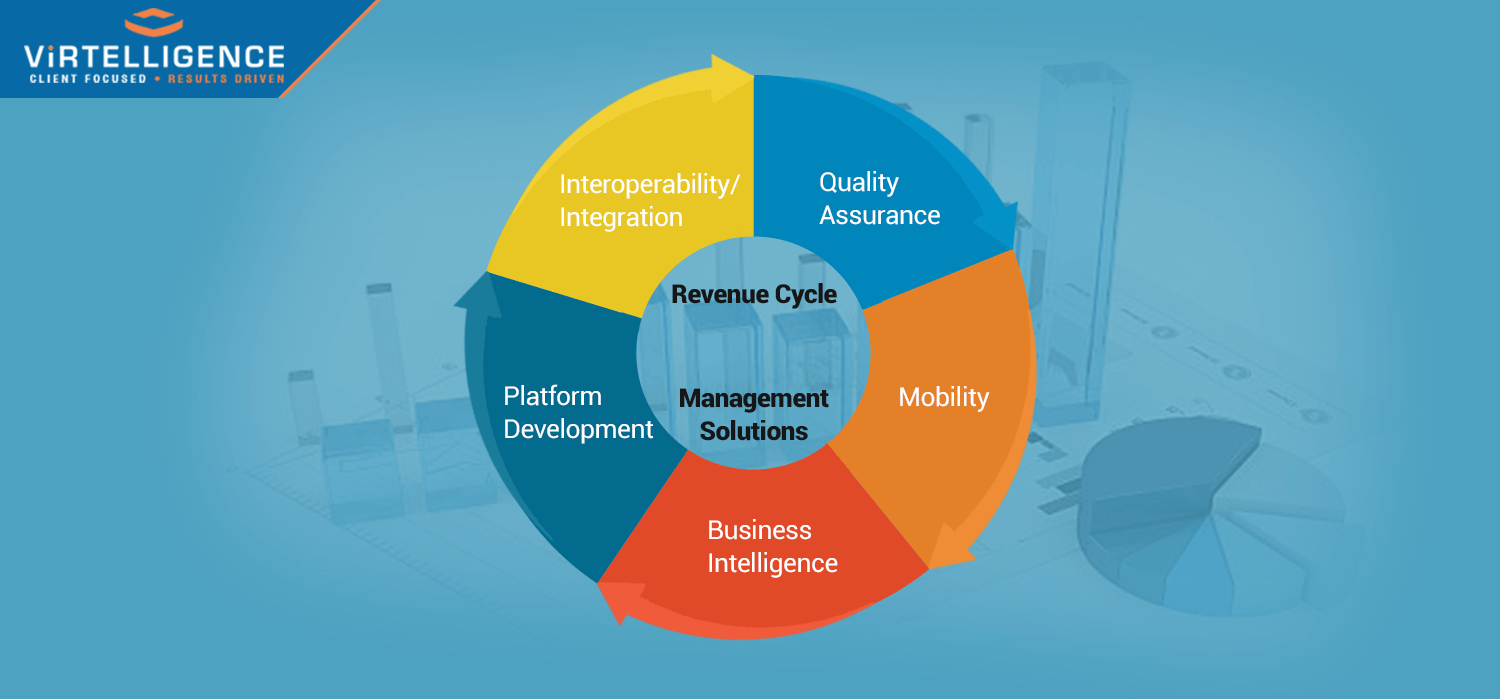
Revenue cycle management (RCM) can be described as the procedure for dealing with claims, managing the payments and making income in the healthcare industry. It starts immediately from the time when the patient schedules an appointment and goes on until the account balance becomes zero. It comprises of different actions including inspection of the patient’s insurance eligibility coding claims.
If asked of the healthcare providers which EHR system they use, the expected answer will be using a single vendor like Epic, Cerner, or MEDITECH. But when they are inquired regarding their revenue cycle management system for Epic or Cerner consulting, they might give a list of different vendors and products for every single component of the cycle. A recent HIMSS Analytics and Dimensional Insight survey disclosed that approximately 69% of the healthcare providers are inclined to use more than one vendor solutions for revenue cycle management.
The healthcare revenue cycle encompasses many operational segments, including patient registration, claim submission, patient accounting, and account resolution etc. No matter how diverse each operation is, the healthcare providers must have to make sure that the cycle flows smoothly and successfully in order to save timely remunerations and patient payments.
Where the healthcare revenue cycle management is concerned, there are always many opportunities for its enhancement. Decreasing claims reimbursement rates, the change to value-based purchasing, and developing health policies are some of the major aspects that keep the revenue cycle leaders continuously in search of innovative approaches to improve the economic condition of their practice or hospital. However, just cutting down the costs and increasing the efficiency in the healthcare organizations is not as easy as it appears to be. Contrasting to other business fields, the consumers of the healthcare industry are mainly dependent on the providers to do whatever it takes to make their health better and the healthcare organizations generally don’t fend off the patients who need help.
Healthcare organizations and practices also work together with many clients in advance of collecting the complete payment for their services. The network of payer regulations for claims reimbursement and the recognition of high-deductible health plans have made the revenue cycle professionals collaborate with many representatives to get a small share of the payment. Latest trends, like value-based reimbursement and healthcare commercialism, are also the factors that affect the process of paying for and delivering the care. Therefore, it is inevitable for the healthcare providers to address the consumer and market demands to keep the doors for future prospects open.
Although, the problems faced by the healthcare industry must have created complications for the revenue cycle management. Yet, healthcare providers and practitioners can have long-lasting and improved healthcare revenue cycle management by implementing the following strategies.
Evaluate and Plan the Front-end and Back-end Revenue Cycle Management
Generally, healthcare revenue cycle management is set apart by front-end and back-end operations. The front-end of revenue cycle management deals in patient-facing. Collecting information from the patients, insurance coverage and eligibility confirmations, and new patients’ registrations all come under the front-end operations. While the back-end revenue cycle management consists of medical billing, claims management, denial management, and gathering final patient financial responsibility. When all the front-end and back-end functions of revenue cycle management are put together the outcome is gross healthcare payments.
Healthcare organizations and practitioners can improve the healthcare revenue cycle by setting up a more informal workflow between the front-end and back-end responsibilities. The solution to achieving a quick and more precise reimbursement is to make sure having a smooth transition through the revenue cycle functions. Transferring the back-end functions to the front-end allows the staff to observe where an account stands in the revenue cycle and predict the potential payment challenges in the early stages of the process.
Go for Implementing a Data-driven Revenue Cycle Management
To track and measure the revenue cycle performance the healthcare providers should plan to implement a data-driven revenue cycle management. Because leveraging the data can help the revenue cycle leaders to know the economic condition of their organization and let them have a fair idea whether the staff is carrying out the much-needed tasks for fast and accurate reimbursement efficiently or not. The healthcare organizations should also use the financial and clinical data to develop and track key performance indicators. The healthcare providers need to track the following five major KPIs to improve the revenue cycle quality for sure:
- Net days in accounts receivable (A/R)
- Cash collection as a percentage of net patient services revenue
- Claim denial rate
- Final denial write-off as a percentage of net patient services revenue
- Cost to collect
The revenue cycle managers also need to propose the KPIs and other data insights to healthcare practitioners and non-medical staff to inspire them to progress the spending and efficiency.
Collecting Up-front Patient Financial Responsibility
Since the high-deductible plans are prevailing in the insurance market, the healthcare providers are more dependent on the patients to support the healthcare services billing. In a report, it was disclosed that approximately 68% of the patients with health bills of $500 or less hadn’t paid the full bills in 2016. The percentage of the candidates who fail to pay their full medical bills has been increasing because in 2015 there were 53% patients and 49% in 2014 that did not pay their full medical bills.
Delayed and poorly-paid patient financial responsibility cause lagging in healthcare revenue cycles. The healthcare organizations not only exposed to the risks of never getting the full payments of their services, but the responsible staff members utilize extra resources for contacting and collecting the bills from the patients. They can avoid such critical situations by simply implementing the point-of-service or pre-service payment options.
In a nutshell, combining the front-end and back-end functions, leveraging the financial and clinical data, and collecting the patient payments up-front are the activities that can assist the healthcare organizations and practitioners to develop a strong healthcare revenue cycle management.